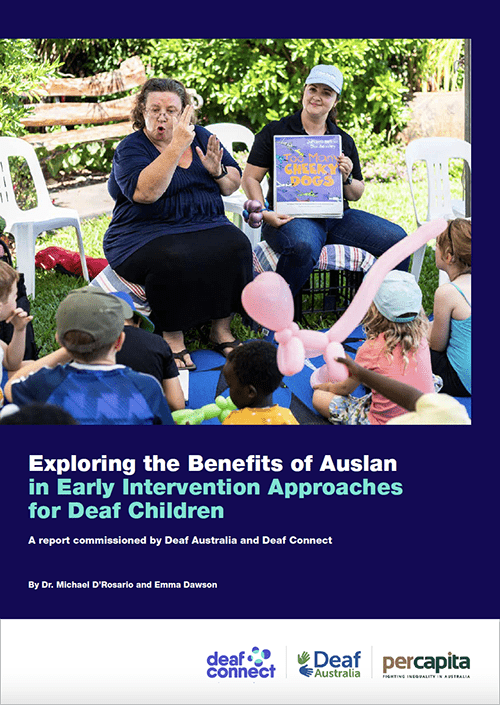While the benefits of sign language are readily apparent, the role of the timing of language intervention, and early intervention are not readily apparent to many who do not possess a thorough understanding of the benefits of such intervention and the process of language acquisition. The decision to support sign language as the first language for a deaf child is a complex one for parents, given that most deaf children are born into hearing families. Nonetheless, the nearly half century’s worth of research supports the role of sign language in early intervention.
Auslan is the language of the culturally Deaf and hard of hearing community in Australia. While sign language usage has been shown to benefit cognitive development and support better learning outcomes, it may be argued that Auslan has not received the same level of support at a national level that European and American sign languages have within their respective jurisdictions over the past 50 years, and consequently there is a dearth of research considering the benefits of early language intervention employing Auslan from an economic perspective. There is, however, a well-established qualitative benefits and developmental research evidence base, that evidences the benefits of sign languages including Auslan, and other European sign languages and American Sign Language, that is instructive and rigorous.
This commissioned research report seeks to summarise the benefits of Auslan and early intervention strategies to inform policy and support a deeper understanding of the role of Auslan as a language modality and the benefits of early intervention as a developmental strategy.

